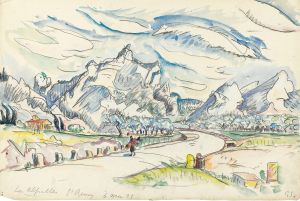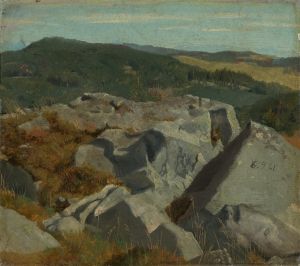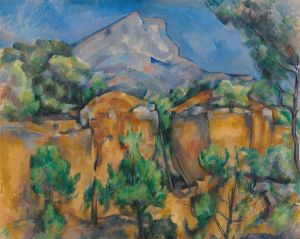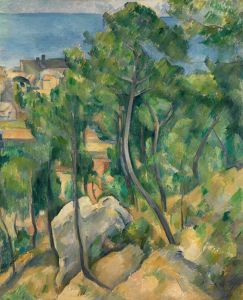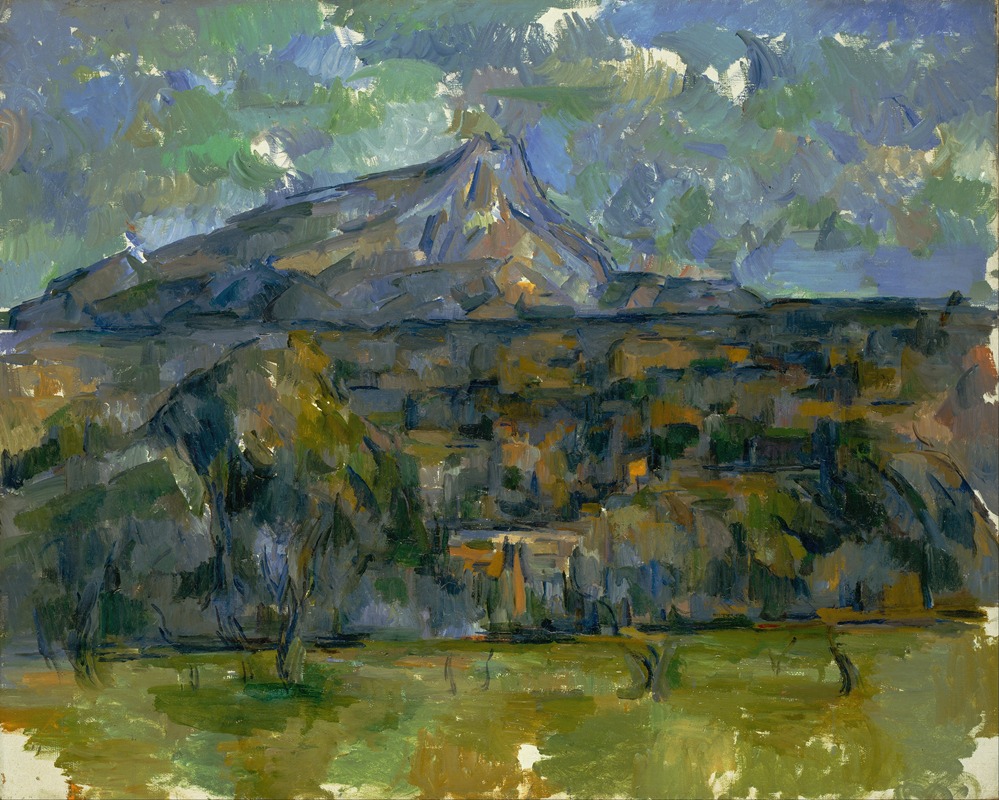
Mont Sainte-Victoire
A hand-painted replica of Paul Cézanne’s masterpiece Mont Sainte-Victoire, meticulously crafted by professional artists to capture the true essence of the original. Each piece is created with museum-quality canvas and rare mineral pigments, carefully painted by experienced artists with delicate brushstrokes and rich, layered colors to perfectly recreate the texture of the original artwork. Unlike machine-printed reproductions, this hand-painted version brings the painting to life, infused with the artist’s emotions and skill in every stroke. Whether for personal collection or home decoration, it instantly elevates the artistic atmosphere of any space.
Paul Cézanne's "Mont Sainte-Victoire" is a series of oil paintings that the artist created between the late 19th and early 20th centuries. These works are celebrated for their innovative approach to landscape painting and are considered a pivotal contribution to the development of modern art. Cézanne's fascination with Mont Sainte-Victoire, a limestone mountain in the Provence region of southern France, led him to paint it numerous times, capturing its form and the surrounding landscape from various perspectives and under different lighting conditions.
Cézanne was born in Aix-en-Provence, and Mont Sainte-Victoire was a prominent feature of the landscape near his hometown. The mountain became a recurring subject in his work, reflecting his deep connection to the region and his interest in exploring the complexities of visual perception. Cézanne's approach to painting Mont Sainte-Victoire evolved over time, showcasing his transition from the more traditional techniques of the Impressionists to a style that laid the groundwork for Cubism and abstract art.
The series is notable for Cézanne's use of color, form, and brushwork. He employed a palette of muted tones and vibrant hues to convey the changing atmosphere and light conditions. Cézanne's brushstrokes are often described as methodical and structured, creating a sense of solidity and depth. He broke down the landscape into geometric shapes, using color modulation to suggest volume and spatial relationships. This technique allowed him to depict the mountain and its surroundings with a sense of permanence and timelessness, while also capturing the transient effects of light and weather.
Cézanne's "Mont Sainte-Victoire" paintings are characterized by their compositional balance and harmony. He often used a high vantage point to provide a sweeping view of the valley and the mountain, with the foreground, middle ground, and background carefully arranged to lead the viewer's eye through the scene. The mountain itself is typically depicted as a triangular form, anchoring the composition and serving as a focal point.
The significance of the "Mont Sainte-Victoire" series lies in its influence on subsequent generations of artists. Cézanne's exploration of form and color challenged traditional notions of representation and paved the way for the development of modern art movements such as Cubism. Artists like Pablo Picasso and Georges Braque drew inspiration from Cézanne's work, particularly his ability to depict multiple perspectives within a single composition.
Cézanne's dedication to capturing Mont Sainte-Victoire reflects his broader artistic philosophy. He sought to convey the underlying structure of the natural world, emphasizing the importance of observation and the artist's subjective experience. His paintings of the mountain are not mere reproductions of the landscape but rather interpretations that reveal the artist's engagement with his environment.
Today, the "Mont Sainte-Victoire" series is regarded as one of Cézanne's most significant achievements. The paintings are housed in major museums and private collections worldwide, including the Musée d'Orsay in Paris and the Metropolitan Museum of Art in New York. They continue to be studied and admired for their innovative approach to landscape painting and their enduring impact on the trajectory of modern art.





